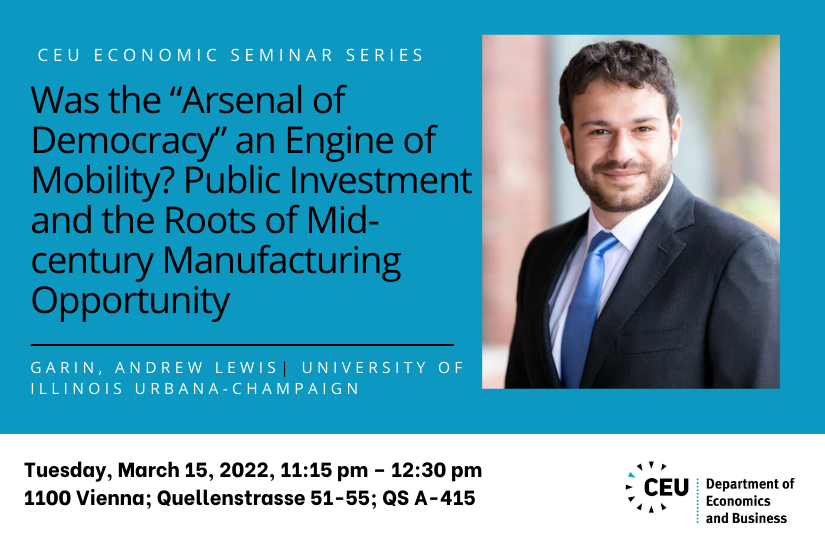
With: Jonathan Rothbaum
Abstract
This paper examines the long-run effects of siting a large government-financed manufacturing facility in a region during World War II (WWII) on local development and on individual-level earnings mobility during the Postwar period. We test for market-level effects by comparing counties that received plants for idiosyncratic war-related reasons to counties that were observably similar in 1930. In counties where plants were sited manufacturing employment rose by 30 percent and average production wages rose by 10 percent after the war, with both remaining elevated through 2000. We find that sitings of both ordnance plants—which could not be converted to civilian use—and general-purpose plants had similar effects on Postwar manufacturing, but that only regions with ordnance plants remained oriented towards defense production during the Cold War. In addition, plant sitings led to permanent increases in regional population and employment and had long-lived effects on local incomes. We test for individual-level effects by studying the long-term earnings effects on workers based on where they resided before the war as children. While we find evidence of selective migration of better-educated individuals into regions with plants, we also find that men born in a locale where a large plant was constructed had 2.8% higher wage and salary earnings as adults in the 1970s and 1980s, though we find no such effects for women's earnings. Moreover, plant sitings increased upward mobility—we find that plants had the largest effects on children of parents with lower 1940 earnings and no effect on children of parents with earnings in the top deciles of the income distribution. We present evidence that these earnings gains were achieved through employment in local high-wage jobs as adults and find little direct of developmental exposure effects. Our results suggest that high-wage work opportunity for workers from disadvantaged backgrounds was an important driver of midcentury economic mobility.